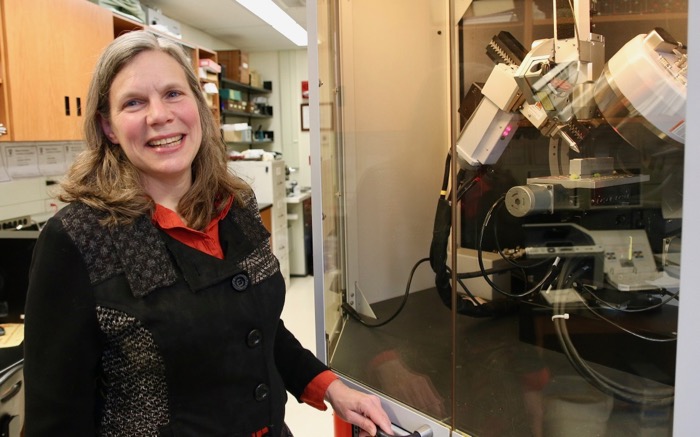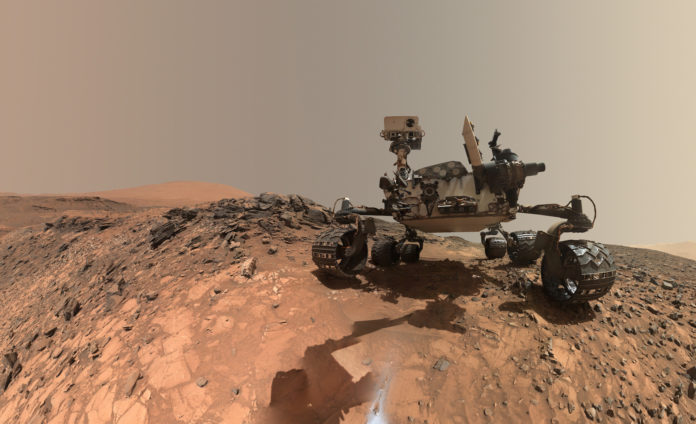Despite being our closest planetary neighbour and one of the most highly studied places away from Earth, there is still a lot we don’t know about Mars. Now, a Western University-led team of scientists is poised to uncover more of Mars’s history than ever before, thanks to a Planetary Instrument Concept Study award from the Canadian Space Agency.
Studying the minerals on Mars won’t just tell us about its present climate and habitability; it will also be a rich source of information on its history and evolution. These data will shed light on the possibility of life on Mars and inform future manned missions to the Red Planet.
Led by Roberta Flemming, professor in the Department of Earth Sciences and the Centre for Planetary Science and Exploration at Western University, the study will focus on developing a new instrument for analyzing minerals on Mars’s surface. The team also includes researchers from Brock University, the University of Guelph, and Canadian companies PROTO and MDA.
A look into the geological history of Mars
The instrument will be based on a technique known as X-Ray Diffraction, or XRD, which is used to study the chemistry, crystal structure, and physical properties of rocks and other natural materials.
It works by scattering x-rays off of a material and collecting the diffraction pattern that is produced; each material makes a unique pattern based on its composition, and they can be compared with known patterns to identify and classify different properties of the material.
The information gathered from XRD can be used to study how a rock or material has changed over time, including how it crystallized and changed due to heat, stress, and shocks.
“We are looking at the record of the planet,” Flemming said in an interview with Western News. “Minerals tell us the story of the planet’s geological history. This project could give us a deeper, richer data set to understand that history.”
The need for non-invasive techniques
The idea to use XRD on Mars is not unprecedented. In fact, XRD techniques are currently being applied on Mars with CheMin (Chemistry & Mineralogy X-Ray Diffraction), an instrument on board NASA’s Curiosity Rover.
The key difference between CheMin and Flemming’s concept instrument lies in the way the rocks are studied.
CheMin drills into Martian rocks, crushing them into a fine powder in the process, and delivers this to a sample holder that carries out the XRD. This process takes up valuable power and rover time, however, and destroys crucial information about the relationships between different minerals in the rocks.
Flemming’s instrument, on the other hand, will be a miniaturized in situ XRD tool: one that can examine Martian rocks in their original locations without needing to destroy them. It will allow the team to study the placement and structure of minerals within the rocks, revealing the rich geological history that would be destroyed by the CheMin process.
If successful, the instrument will be able to provide scientists with the most detailed mineralogical data from Mars in history.

Preparing for Mars from back home on Earth
To design and test their instrument, Flemming and her colleagues will make use of Martian analogue rocks. These are rocks found on the Earth that are made up of minerals commonly found on the Martian surface.
They will also test their instrument on Martian meteorite samples.
While the in situ XRD techniques will be refined in Flemming’s micro XRD lab at Western University, PROTO Manufacturing will be responsible for bringing these techniques to rover-candidate x-ray components. The research Flemming and her team carry out here on Earth will prepare the instrument for deployment on future Mars exploration missions.
There are at least three upcoming rover missions currently planned for the Red Planet, including the European Space Agency’s Rosalind Franklin ExoMars Rover set to arrive in 2021.
While instrumentation for these planned missions is already set, Flemming’s team will be crucial contributors to the next generation of Martian explorers.








































